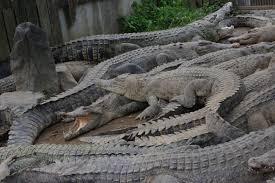
Umi Jigoku (Sea Hell) with its Inari shrine which leads form the hot spring up an adjacent slope
If Shinto is a religion of awe, as Joseph Campbell said, then it is not surprising that the hot springs and volcanic activity in Japan should have inspired an acute awareness of the power of nature. Bubbling waters of 100C or more, sometimes gushing into the air as geysers, sometimes creating strangely coloured patterns in the earth, are indeed awe-inspiring.
Previous postings on Green Shinto have also noted the connection of hot springs with Shinto purification and cleanliness (click here). On a recent trip to Beppu in Kyushu, perhaps most famous of all hot spring resorts, I was reminded of all this when visiting the Seven Beppu Hells. These are a series of unique hot springs, not for entering or relaxing in, but for looking at since they are too hot for human endurance.

Beppu White ‘Hell’ – the wonders of nature in the circular art work which forms and dissolves in mesmerising patterns
Each of the Seven Beppu Hells has a special character, to do with the distinctive colour emanating from the particular minerals in the ground below. Some are especially fascinating, such as the White Coloured Pond where nature creates its own ongoing artwork. It reminded me of the Aeolian harp hung in trees through which the wind blows its own made-up music.
The Seven Hells are set up in pilgrimage style so that you get a stamp from each one to give a sense of completion. (There’s a delicious irony in making a pilgrimage tour of ‘hells’.) The only drawback to the experience, and for me it’s a major drawback, is the absolutely appalling abuse of animal rights at three of the hells. For the ‘viewing pleasure’ of tourists, fish, crocodiles and ‘zoo animals’ such as a hippopotamus are kept crowded, in cramped concrete conditions with not the slightest regard for their welfare. The crocodiles are even piled up on top of each other such is their number and lack of space.
That a Shinto shrine presides over such abuse is unfortunate, and one wishes that a Shinto priest might take steps to end the suffering of fellow creatures. Misguided Westerners who like to promote the idea that Shinto is some kind of benign environmental religion really should visit sometime and see the reality for themselves. (For horse abuse at a Shinto festival, please see here. For abuse of bears, please see here. For fish abuse, see here.)
For those who think Beppu Hell is all about hot water, a visit may well suggest a different meaning!
*******
For a previous post on Tamatsukuri hot spring of myths, see here.
For more about animal cruelty at the Beppu Hells, please see Trip Advisor or this Peta Asia piece.

Crocodiles on concrete piled up on top of one another. About as far from ‘nature’ as one could get. (Picture from matcha-jp.com)

Lone elephant in a concrete hell (courtesy http://1.bp.blogspot.com)

Leave a Reply